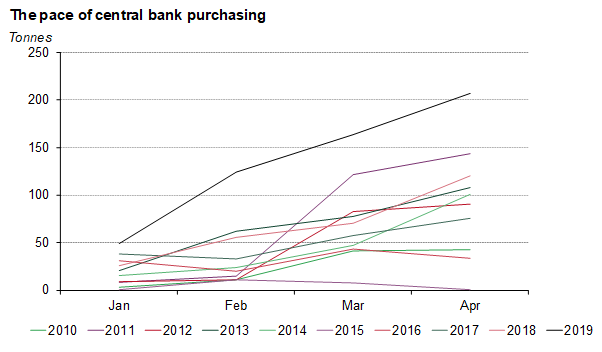As we do every month, we have now published our widely watched central bank statistics. These figures give a clear view of central bank activity and how gold reserves are evolving.
No cooling off period. The initial data for April – released by the IMF – shows demand remains in rude health. Net purchases amounted to healthy 43t, 8% higher month-on-month. Combined gross purchases (over one tonne) in April amounted to 45t, a similar level to March, while gross sales (again over one tonne) totalled just under 2t.
Reported net purchases for 2019 so far total 207t, the highest year-to-date total since central banks became net buyers in 2010. (And it’s not even close – see chart.) This could be viewed as a strong statement of intent towards gold, especially given this follows the highest level of annual purchases for 50 years.

